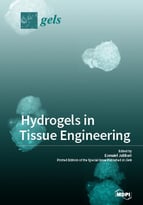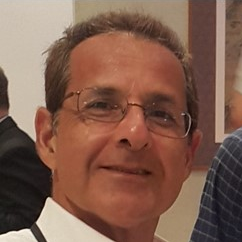Hydrogels in Tissue Engineering
A special issue of Gels (ISSN 2310-2861).
Deadline for manuscript submissions: closed (31 October 2017) | Viewed by 87060
Special Issue Editor
Interests: bioinspired gels; gels for stem cell delivery; self-assembled micelles for growth factor immobilization; models gels to control cell microenvironment; composite materials with structure at multiple length scales; skeletal tissue engineering
Special Issues, Collections and Topics in MDPI journals
Special Issue Information
Dear Colleagues,
Hydrogels form the foundation of tissue engineering and regenerative medicine as a supportive matrix for cell immobilization and growth factor delivery. Hydrogels, due to their wide range of properties, have been used as injectable, in situ gelling, patterned matrices, viscous gels, thin sheets, and three-dimensional scaffolds in regenerative medicine to guide and regulate cell fate. It has been widely established that the fate of implanted cells is mediated by cell–matrix and matrix–morphogen interactions at nano-, micro-, and macro-scales. Further, the fate of multi-cellular implants is dependent on in situ, timed-release of growth factors to guide the differentiation and maturation of cells to different lineages. As a result, recently there has been great interest in hydrogels with a hierarchical structure that mimic the complex interaction of cells with their microenvironment at multiple length scales, and hydrogels that can locally release growth factors to specific cells at different time scales. Related topics include: hydrogels with a hierarchical structure; self-assembled hydrogels; hybrid and degradable hydrogels; load-bearing and self-healing hydrogels; hydrogels for cell encapsulation and biofabrication; hydrogels for micro-patterning, microfluidic devices, and high-throughput screening; injectable and in situ hardening hydrogels for minimally-invasive applications; hydrogels that modulate the body’s immune response; and hydrogel-based delivery systems for spatiotemporal delivery of growth factors.
Prof. Dr. Esmaiel Jabbari
Guest Editor
Manuscript Submission Information
Manuscripts should be submitted online at www.mdpi.com by registering and logging in to this website. Once you are registered, click here to go to the submission form. Manuscripts can be submitted until the deadline. All submissions that pass pre-check are peer-reviewed. Accepted papers will be published continuously in the journal (as soon as accepted) and will be listed together on the special issue website. Research articles, review articles as well as short communications are invited. For planned papers, a title and short abstract (about 100 words) can be sent to the Editorial Office for announcement on this website.
Submitted manuscripts should not have been published previously, nor be under consideration for publication elsewhere (except conference proceedings papers). All manuscripts are thoroughly refereed through a single-blind peer-review process. A guide for authors and other relevant information for submission of manuscripts is available on the Instructions for Authors page. Gels is an international peer-reviewed open access monthly journal published by MDPI.
Please visit the Instructions for Authors page before submitting a manuscript. The Article Processing Charge (APC) for publication in this open access journal is 2600 CHF (Swiss Francs). Submitted papers should be well formatted and use good English. Authors may use MDPI's English editing service prior to publication or during author revisions.
Keywords
- Hydrogels with a hierarchical structure
- Self-assembled hydrogels
- Hybrid and degradable hydrogels
- Load-bearing and self-healing hydrogels
- Hydrogels for cell encapsulation and biofabrication
- Hydrogels for micro-patterning, microfluidic devices
- High-throughput screening, injectable
- In situ hardening hydrogels for minimally-invasive applications
- Hydrogels that modulate the body’s immune response
- Hydrogel-based delivery systems for spatiotemporal delivery of growth factors
Related Special Issue
- Polymers Applied in Tissue Engineering in Polymers (16 articles)







